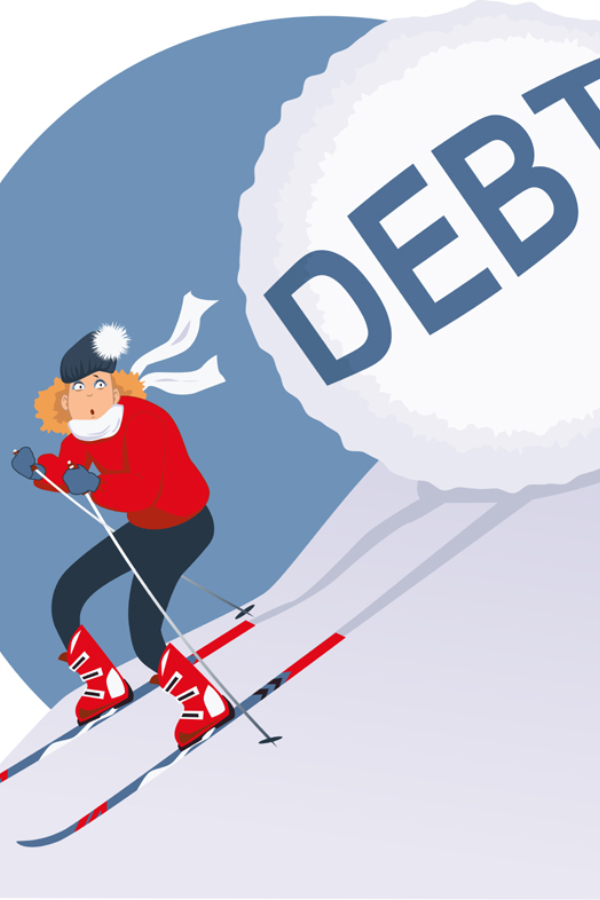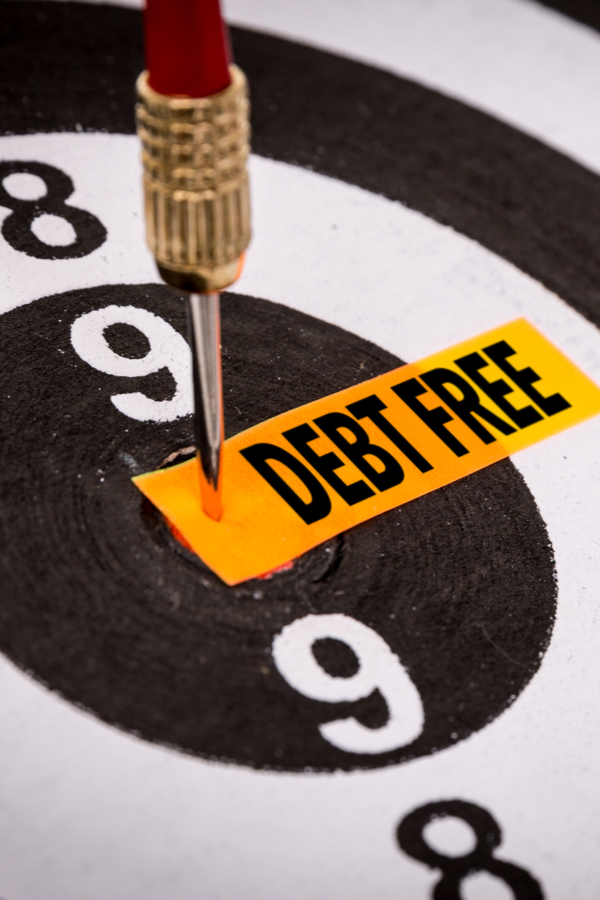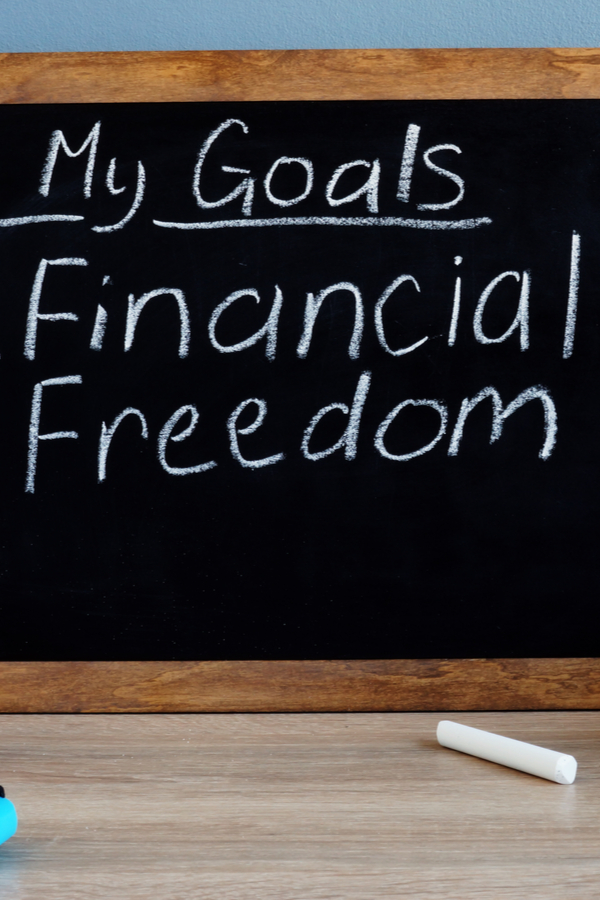Do you have debt? Are high interest credit cards or student loans weighing you down? Maybe it is time to eliminate your debt by using the debt avalanche or debt snowball method.
Getting out of debt is often times one of the best things you can do for your financial freedom. If you want to have a comfortable retirement and live the life of your dreams you need to eliminate debt.
However, this can be difficult. Quite simply, life happens! We all run into tough circumstances where debt might be the only option. On the other hand, we don’t have to continue to live with it.
This is where debt repayment methods come in handy. The two most popular methods are the debt avalanche method and the debt snowball method. With these two methods you can finally eliminate your debt.

Debt Avalanche Method to Eliminate Debt
Let’s first start with the debt avalanche method to eliminate debt. The debt avalanche method involves making minimum payments on all debt, then taking all your leftover money and paying it towards the debt with the highest interest rate.
This method can result in less interest accruing on your debt, but it does require extra discipline on your part.
Let’s run through an example. Say you have three different sources of debt:
- Credit Card ($50 minimum payment with a 24% interest rate and $1,000 worth of outstanding debt)
- Student Loan ($300 minimum payment with a 6% interest rate and $15,000 worth of outstanding debt)
- Car Payment ($450 minimum payment with a 4% interest rate and $5,000 worth of outstanding debt)
With the debt avalanche method, here is how you would eliminate the debt.

Eliminate Debt
First, you would pay all the minimum payments for all three sources of debt. Then you would pay $50 towards your credit card, $300 towards your student loan, and $450 towards your car payment.
After you have made the required minimum payments, you will now tackle the source of debt that has the highest interest rate. In this case, you will put any extra money you have left towards your credit card.
With a 24% interest rate, your credit card will increase your debt extremely fast. Under the debt avalanche method, if you want to eliminate debt, you need to pay this card off as fast as possible.
After you have paid off your credit card, you will now move towards your student loan since it has the second highest interest rate. Then, in order to completely eliminate debt, you will pay off your car.
Well, there you have it – how to use the debt avalanche method to eliminate debt.
Debt Snowball Method to Eliminate Debt
However, the debt avalanche method is not best for everybody. There is a second method called the debt snowball method that can help you eliminate debt.
The debt snowball method for eliminating debt is accomplished by making minimum payments on all debt, then with whatever money you have left over, paying off the smallest debts first regardless of their interest rates.
You see, where the debt avalanche method is focused on interest rates, the debt snowball method is focused on the outstanding debt.

Let’s go back to our previous example of the credit card, student loan, and car payment. Using the debt snowball method, you will again start with your credit card.
However, this time you are choosing the credit card because it has the smallest amount of outstanding debt (not because it has a higher interest rate).
The debt snowball method to eliminate debt is all about building momentum.
For many, paying off debt is hard. It takes discipline and consistency to get it done. The debt snowball method helps you build confidence by knocking out debt quickly.
After you have finished off paying the credit card, you will now move to the car payment, not the student loan. The car payment has the second lowest outstanding debt with $5,000.
Finally, you will move to the student loan and work on paying that off. Once you have conquered this, you will be debt free!

Which Method is Best for You?
Now you know how to eliminate debt. Finally, you have two methods to choose from.
However, the question remains, which method is best for you?
Well, that depends on a couple of factors. The debt avalanche method is best for those who have a little bit of extra discipline to pay off their debt.
Since you are focusing on the higher interest rate debt, you are likely to save money in the long run. But this requires you to tackle a big challenge.
It can be difficult to scrounge up the cash to pay higher interest rate loans. However, if you want to eliminate debt and pay less money in the long run, this is the method for you.
On the other hand, if you are someone who needs to see results quickly and maintain motivation then the debt snowball method might be the correct choice for you.

Furthermore, this method allows you to make progress fast and is about getting the small things fixed. Because you are focusing on the lowest amount of debt, you can eliminate these fast!
Either method will work, but it is all about knowing yourself. Are you somebody who needs the extra motivation to keep going? Choose the debt snowball method.
Or are you somebody who wants to tackle a tough challenge and get rid of high interest rates? Choose the debt avalanche method.
Why We Need to Eliminate Debt?
Getting rid of the dark cloud of debt is a huge weight off your shoulders. When you no longer own anybody money, you have the chance to invest in YOUR future.
You can invest in the stock market, create a budget for your children’s future, or even take yourself out on a nice trip. For many, you could be the first generation to be debt free! Why not let it be you?
You can be the one to change your family history forever!
Eliminating debt is freeing. It is like a weight being lift off your shoulders and you can breathe again.
Take the time to choose either the debt avalanche or debt snowball method today, and eliminate your debt!
Live Simple Now is a lifestyle website dedicated to helping those looking to Live Their Best Life! Feel free to email us at livesimple@livesimplenow.com with comments, questions, article topics or submissions. We publish two articles each week, 52 weeks a year. Sign up today to follow via email, or follow along on Facebook.
